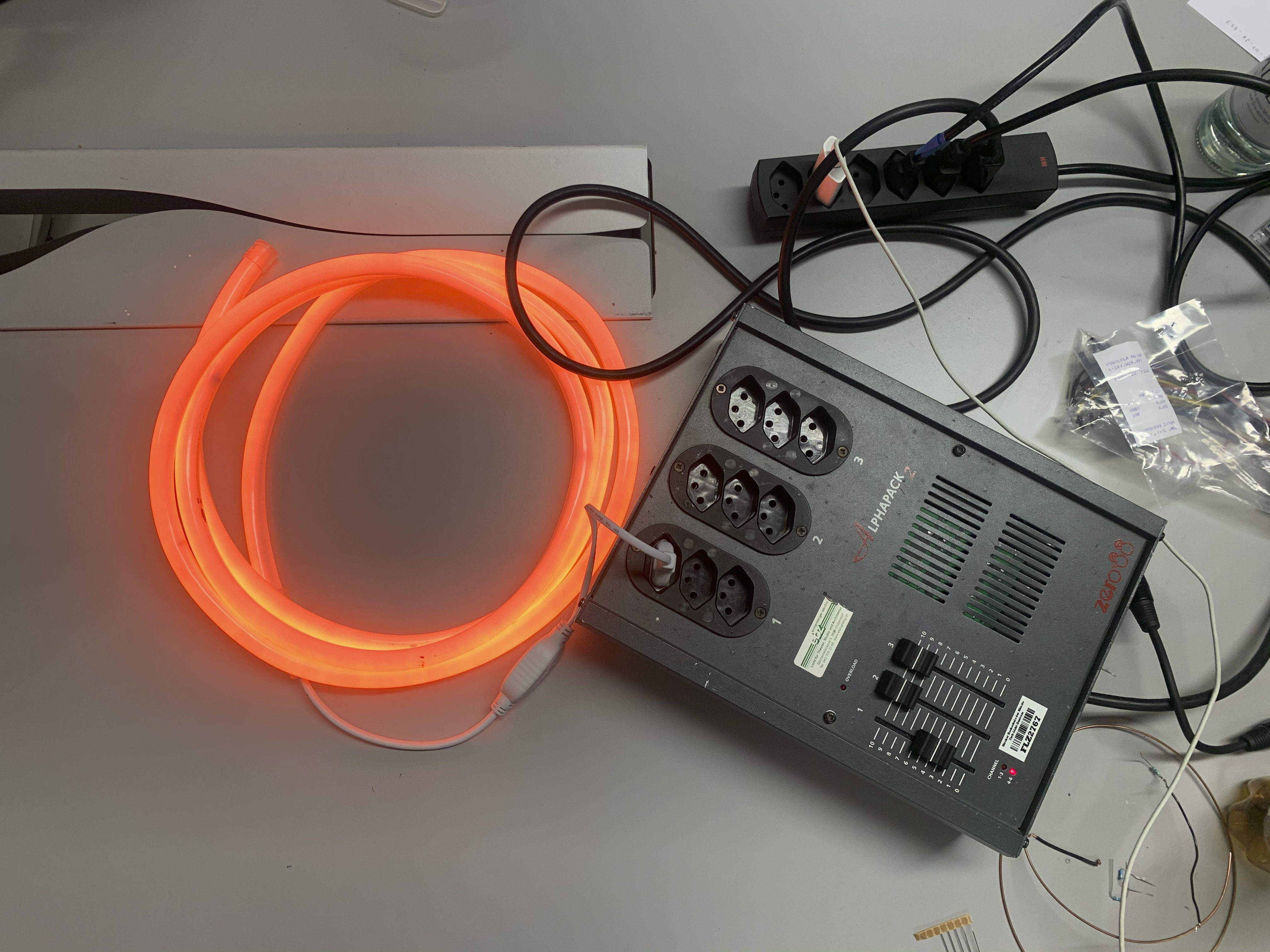AUTUMN 2022
INTERACTIVE installation
Groupwork By
Tanya, Anja, Basil, Luca, Stephan

Concept
Our world is changing, and we can all feel it. Climate change, natural disasters, and conflicts. We, humans, are slowly losing control and need to take action. In recent studies, researchers are investigating how to make plants grow more efficiently with LED light. This process is also an intervention in nature, turning plants into artificial objects. To show how vital the preservation of nature is for humans, we chose a rather unusual approach by juxtaposing an industrial and artificial environment, namely a steel framework, with plant-like structures, the lights, that are growing from the ceiling. The fact that the natural elements themselves do not exist in this installation is a foreshadowing of a futuristic scenario where even the plants themselves are replaced by artificial elements.




process
We tried to mix as few components as possible to remain abstract and maintain the industrial, monotone look. We use a metal, slightly rusty tube system (Röhrlisystem), which embodies a cold feel and robustness. As a second component we hung the liana-shaped lights, which wrap around the tube system in cold white light. The third and last component is the hanging lightbulb.




We built a 1:1 structure out of the tube system in the backyard of the atelier. This was done to check if the dimensions felt right and to analyze how the visitor would walk through the room.
To test whether all the components work together and the programs behave as they should, we first created some prototypes.

Furthermore, we tested different flickering states and the brightness of the EL wires using an alphapack connected to the Arduino. The challenge was to find the optimal speed of the flickering and to set a brightness cap, so that the lights were not too bright from the beginning.

Also, we ran some experiments on the capacitive sensor, which is built completely in Arduino. Using different conductive materials like copper or aluminum foil. We tested the quality of the feedback to enable the sensor to work from a near distance of the material without touching it.

Lastly, it was important for us that the floor material, where the contact microphone is placed on, recognizes footsteps from a significant distance. To return an echoing sound from the speakers, the feedback of the microphones was pitched accordingly in Ableton.

